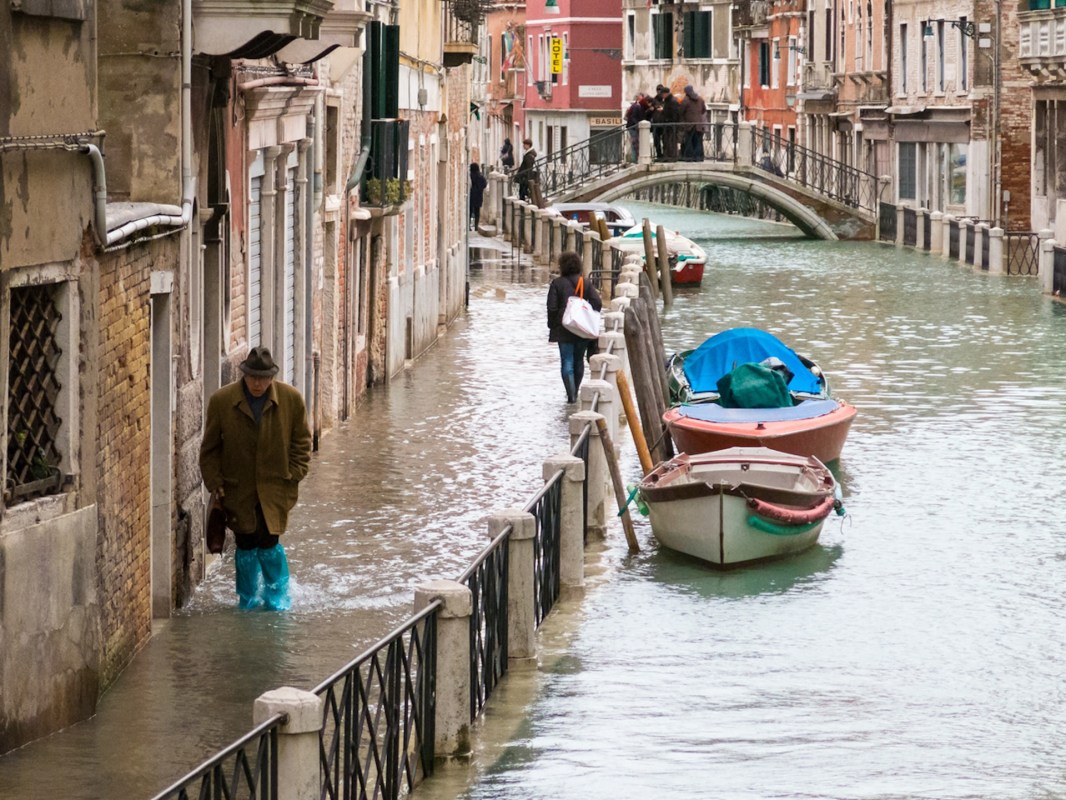Regular high tides in Venice, Italy, have flooded the city for centuries. Now, MOSE, a system of 78 hinged steel floodgates along the seafloor, is offering protection, but experts question whether it can stand up to a warming planet, as the Economist reports.
After nearly two decades of construction, MOSE — known formally as the Experimental Electromechanical Module — is now in operation. Its system of floodgates runs for about a mile along the seafloor beneath the three inlets to the Venetian lagoon, per the Economist. When high tide rolls in, machines compress air that is blasted into the floodgates. Seawater is forced out, and the floodgates rise. This creates a barrier that keeps the city dry until the tide retreats.
That's not to say that the system doesn't come with challenges. First off, it's expensive — each raising of the barrier costs about €150,000 (around $165,000 as of mid-January). Plus, the barrier disrupts water traffic, which can cost maritime workers like fishermen money.
According to geologist Luigi Tosi, sealing the lagoon off too often could also result in water that is "first a bathtub, then a sewer," per the Economist. That's because most of Venice's sewage runs into the city's canal system.
Plus, it may not be able to keep up with the rising sea levels that accompany a heating planet. In fact, some researchers are predicting a water level rise between 32 and 110 centimeters (about 13 to 43 inches) in the lagoon by 2100, the Economist reports. Not to mention that the city itself is sinking because of the extraction of groundwater.
That's why experts say the system must be updated to contend with these environmental changes. Tosi is a proponent of pumping seawater underground to actually raise the city back up, reports the Economist.
Though it comes with obstacles, MOSE offers a unique solution to flooding that could be applied in certain other flood-prone areas across the globe as the planet continues to warm.
In the United States alone, 40% of the population lives in coastal areas, and more than $1 trillion worth of property is located within 700 feet of the coast, the U.S. Environmental Protection Agency reports. People and properties situated near the ocean may be at greater risk for the extreme weather events that come with a heating planet, including hurricanes, rising sea levels, and high tide flooding like that in Venice.
It's not just coastal communities at risk of flooding, however. Heavy rain around Milan caused major flooding in the city in late 2023. Meanwhile, Venice survived the same storm system thanks to MOSE.
Of course, MOSE isn't the only innovative solution to flooding.
A team in Vancouver, Canada, is hoping to revamp the city's waterfront area to take advantage of floodwaters. The plan includes vertical extensions of flood-adaptive townhouses with community terraces and mid-rise buildings with public spaces that allow for flooding without permanent damage, as well as "floating habitat islands" and mixed-use spaces on stilts.
Join our free newsletter for weekly updates on the coolest innovations improving our lives and saving our planet.









